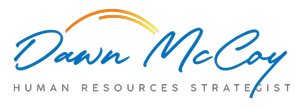The recent events in the US, George Floyd’s death, the protests against racism, followed by similar events in Canada, have led many of us to question what racism actually is, how it shows up and how it impacts our communities and workplaces. Understandably, this is a very difficult conversation to have because Canadians pride ourselves on our democratic and multicultural society. We have such diversity in Canada. We have laws protecting people of colour from discrimination on the basis of their race or ethnic origin. The presence of visible minorities may have some people believe that the numbers suggest we have a diverse and inclusive workforce. There is a perception that this means we do not have a problem with discrimination or racism.
Unfortunately, our history of colonization, slavery (yes, slavery did exist in Canada), Residential schools, and racially motivated laws, policies and programs created a culture and systems that either overtly or systemically resulted in fewer opportunities for Black, Indigenous and People of Colour (BIPOC) and other marginalized equity seeking communities. The real challenge for municipalities today is not the overt racism that occurred in Canada’s past, but rather the inadvertent or systemic racism that has resulted from the institutions, systems, culture and beliefs that grew out of our checkered Canadian history.
The purpose of this article is not to prove that racism exists in Canadian municipalities, but rather to help municipalities get started on the journey to stamp out systemic racism and build diverse and inclusive communities and workplaces.
So what is systemic racism? Ontario’s Anti-Racism Strategic Plan says systemic racism occurs when an institution or organization creates or maintains racial inequity. This can be unintentional, and doesn’t necessarily mean that people within an organization are racist. It can be the result of doing things the way they’ve always been done, without considering how they impact particular groups differently. The Plan highlights some examples of systemic racism: at school, an Indigenous girl learns more about Europeans settling in Canada than the history of her nation and its relationship with this land; a Black teenage boy is not provided all of his higher education options as he finishes high school; a Muslim woman is frequently asked to pass through a separate security line when she travels.
Municipalities have a double challenge when trying to address racism and promote diversity and inclusion. They must ensure the external services provided to the community are free from barriers that may exclude certain groups. They also have the obligation to ensure municipal employees are not subject to overt or systemic racism through their policies, procedures and practices. Often programs and practices that address racism and embrace diversity and inclusion within the community have a similar impact within an organization. In either case, it is important that the leadership of the municipality set a clear direction and make eliminating systemic barriers to participation a priority.
There are policies and procedures that deal with harassment and our Canadian Human Rights laws are very clear about discrimination on the basis of race. However, when we look at the representation of our BIPOC community in elected bodies or municipal organizations, it is rarely representative of the actual population within the community. Do we have proportional (or any) representation of the underrepresented groups playing on our hockey teams, applying for municipal boards, running for election or applying for the jobs we have available. The question a municipality should ask is, “Why not? What is preventing people from applying or being hired? How are our systems, procedures and policies creating a barrier for people of colour (as well as other marginalized groups such as women and the LGBTQ community) in our organization?”.
It should be understood that the existence of systemic racism does not mean that everyone is racist, but rather that certain systems or processes may inadvertently result in racist outcomes. For example, studies have shown that merely having a non-ethic name provides a significant advantage in securing employment interviews, and thus employment, even if virtually all other factors amongst applicants are identical. This is a systemic problem – rarely does anyone wilfully set out to disadvantage those whom he or she is not like. It is a widespread systemic consequence of implicit bias where we tend to gravitate towards people who are like ourselves.
AK Akinnola, Senior Manager at the Canadian Centre for Diversity and Inclusion (CCDI), believes it is very important for municipalities to directly confront racism, not assume it does not exist. He says municipalities should “assume there is racism and that it’s systemic in their communities and the workforce. Don’t push back on this unless you’ve experienced every life of every marginalized person who’s experienced racism.”
In order to develop a strategy to combat racism, Akinnola says the first step is to understand what is going on in the community in terms of the demographic profile of and how they are feeling in terms of their levels of inclusion, and access to employment, social services, health and education. Talk to the marginalized groups in your community. Ask them what they have experienced in terms of community services and employment.
For real change to happen, Akinnola stresses that municipalities need to commit, at the council and administrative levels, to developing a Diversity and Inclusion strategy with a clear theory of change, outcomes-based performance measurement with accountabilities and indicators of success and that would include how to meaningful create strategic alliances and partnerships with racialized communities and equity seeking groups.
Yes, Canada does have a diverse population. Yes, your organization may have a diverse group of employees. However, according to City of Chestermere Diversity and Inclusion Strategist, Joanne Kinya Baker, there is a difference between diversity and inclusion. She explains, “Diversity is a fact. We live in a diverse world. Inclusion is a choice. We have to be very intentional about inclusion. When you have diversity without inclusion, it becomes harmful. People will graduate to their own groups.” Kinya Baker shared a quote from Verna Myers to elaborate. “Diversity is being invited to the party, but Inclusion is being asked to dance. Belonging is dancing like nobody is watching.”
The City of Chestermere started on this journey several years ago. City Council are strong promoters of diversity and inclusion in the community and within the municipal organization. The City recognized meaningful change would require allocating resources, and through a review of the organization’s structure in 2019, Kinya Baker was positioned as the Diversity and Inclusion Strategist.. The strategy in Chestermere is to have the municipality initiate programs, eventually turning these over to community groups. “Because community leadership is involved,” Kinya Baker explains, “it makes it a safe place for others to get involved”.
The municipality is also a member of the Coalition of Inclusive Municipalities (CIM), formerly known as Canadian Coalition of Municipalities Against Racism and Discrimination (CCMARD). The purpose of the network is to “bring together municipalities that want to improve their policies against racism, discrimination, exclusion and intolerance”. The City of Chestermere has also embraced the Welcoming and Inclusive Communities (WIC) program which is an initiative of the Alberta Urban Municipalities Association (AUMA). As stated on their website, “Municipal governments function at the most practical level and are directly involved in the lives of their residents. Municipalities are an ideal level of government to develop policies, programs and strategies that celebrate the community’s diversity, and take meaningful action toward eliminating racism and discrimination.”
It is clear that racism has not been eliminated in municipalities but it has become less overt and is a function of the systems, culture, procedures and policies that have evolved over time. However, in the absence of action, the problem is not going to get better on its own and systemic challenges in municipalities will likely increase, resulting in greater problems in the future. The protests seem to be gaining momentum, and there is increasing awareness globally for the “Black Lives Matter” movement. Akinnola stresses that municipalities who are proactive will be more competitive and develop a reputation as inclusive, attracting people and businesses and setting a positive open culture. The positive relationships and partnerships that will develop when consulting with racialized community groups and equity seeking groups in the municipality will lead to a healthy vibrant and colourful community.




